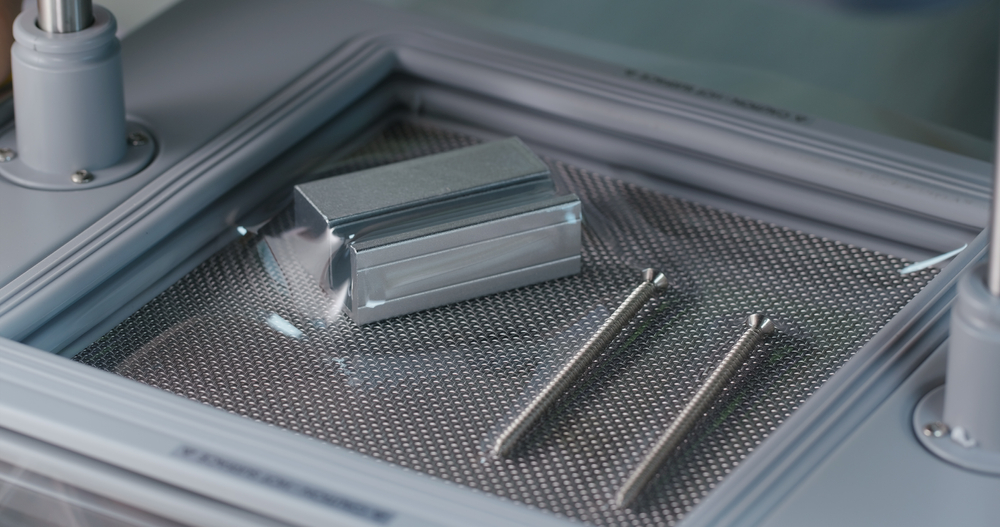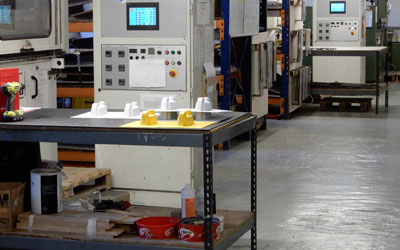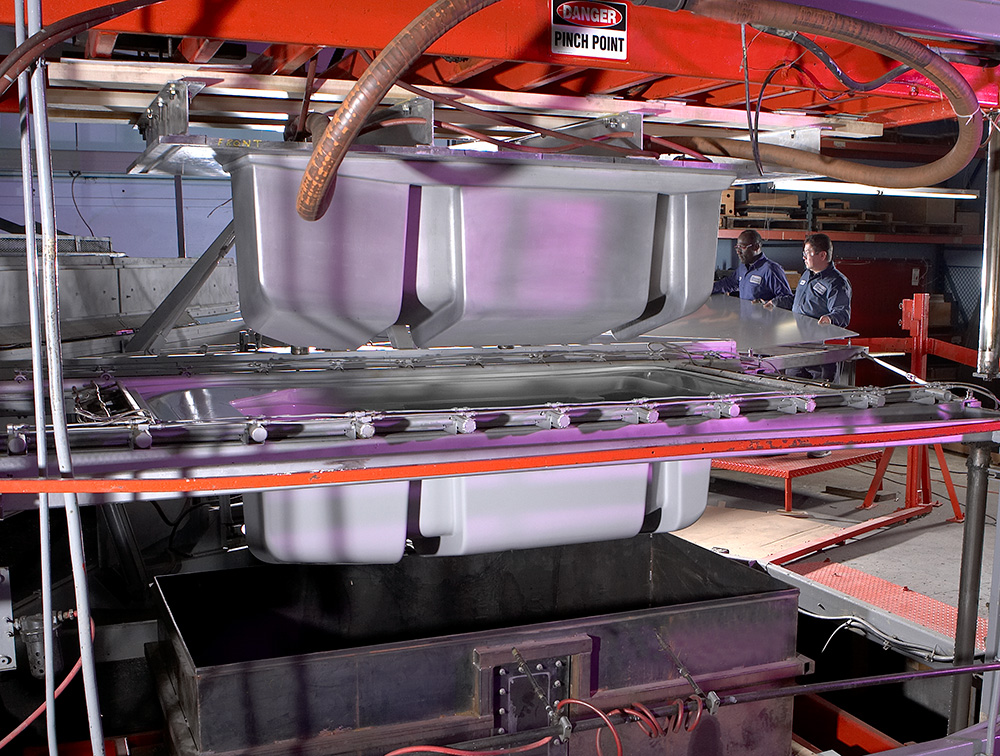How Accurate is Vacuum Forming:Vacuum forming offers moderate accuracy, suitable for many applications, but intricate details and tight tolerances.

Materials and Their Influence on Accuracy
In vacuum forming, the type of material you choose plays a significant role in the final product’s accuracy. Several factors related to materials can either enhance or hinder the level of precision in the process.
Commonly Used Materials
- ABS (Acrylonitrile Butadiene Styrene): ABS is versatile and offers moderate accuracy. It is widely used in consumer goods like toys and casings for electronic devices.
- Polycarbonate: Known for its high strength and transparency, polycarbonate is another commonly used material. However, it is sensitive to moisture and requires a dry manufacturing environment for optimal accuracy.
- Polyethylene: This material is often used in packaging and storage containers. It tends to have a lower level of accuracy due to its higher thermal expansion rate.
- PVC (Polyvinyl Chloride): PVC is useful for both rigid and flexible applications, such as pipes and inflatables. It usually provides moderate to high accuracy depending on the thickness of the sheets used.
- PET (Polyethylene Terephthalate): Often used in food packaging, PET offers a high degree of accuracy but may be less suitable for complex forms.
For an in-depth look into the properties of these materials, the Wikipedia page on Plastics is an excellent resource.
Material Shrinkage and Expansion
Different materials will react differently to heat and pressure, thus influencing the degree of shrinkage or expansion during the vacuum forming process.
- Shrinkage: Materials like polyethylene tend to shrink more during the cooling phase, which can lead to reduced accuracy. It’s crucial to account for this in the mold design.
- Expansion: On the other hand, materials like polycarbonate can expand significantly when heated. Therefore, the mold and machine settings need to be calibrated carefully to ensure high accuracy.
- Coefficient of Thermal Expansion: This is a critical factor in determining how much a material will shrink or expand. Knowing this can guide in selecting the most accurate material for your needs.
Machines and Equipment
The choice of machines and equipment is pivotal in determining the accuracy of vacuum-formed products. Not all machines are made equal, and understanding the characteristics of each type can substantially impact the quality of the final product.
Types of Vacuum Forming Machines
- Manual Vacuum Forming Machines: These are the simplest and least expensive. They’re often used for small batches and simple designs but may lack the high-precision capabilities of more advanced machines.
- Semi-Automatic Machines: These machines have some automated features, usually in the heating and cooling stages. They offer better accuracy than manual machines but still require operator intervention for optimal results.
- Fully Automatic Machines: These are the pinnacle of vacuum forming technology, often equipped with computer-controlled systems for highly precise operation. They offer the best accuracy but come at a higher cost.
To further understand the types and mechanisms of these machines, you can refer to the Wikipedia page on Thermoforming, which includes information relevant to vacuum forming as well.
Influence on Accuracy
- Machine Calibration: A well-calibrated machine can achieve a more accurate end product. Regular maintenance and checks are necessary to ensure the machine operates within tight tolerances.
- Technological Features: Advanced features like digital temperature control, precise vacuum gauges, and computer-aided manufacturing (CAM) can significantly improve accuracy.
- Operator Expertise: Even the most advanced machine will not deliver optimal accuracy without a skilled operator. Familiarity with the machine’s features and capabilities can be a significant factor.
- Upgrades and Add-ons: Some machines allow you to add extra modules or features to enhance their capabilities. Depending on your needs, these could be a worthy investment for better accuracy.
Process Variables
When it comes to vacuum forming, the devil is in the details. By this, we mean that small variations in the process variables can have a considerable impact on the final product’s accuracy. From heating to vacuum pressure and cooling, each stage requires precise control.

Heating Time and Temperature
- Temperature Range: Different materials have specific optimal temperature ranges for vacuum forming. Going above or below this range can result in poor accuracy.
- Heating Time: The amount of time the material spends in the heating stage needs careful control. Too little time, and the material may not form correctly; too much time, and it may become too pliable or even degrade.
- Heating Elements: The type and arrangement of heating elements in the machine can also impact accuracy. Infrared heaters are often used for their precise control.
For more on heating elements and temperature control, you can consult the Wikipedia page on Heat Transfer.
Vacuum Pressure
- Pressure Level: Achieving the right level of vacuum pressure is critical. Too little pressure, and the material may not form tightly against the mold; too much, and you risk thinning out or tearing the material.
- Timing: The speed at which vacuum pressure is applied also matters. A quick application can prevent air bubbles, which may otherwise reduce accuracy.
- Gauges and Sensors: Using accurate pressure gauges and sensors can help maintain consistent vacuum levels, enhancing the accuracy of the formed product.
The Wikipedia page on Vacuum offers a more comprehensive understanding of how pressure influences various processes, including vacuum forming.
Cooling Time
- Duration: Like heating, the cooling stage requires precise timing. An inadequate cooling period can result in a final product that has not fully set, affecting its dimensions and overall accuracy.
- Cooling Method: Whether you’re using forced air, water, or other cooling methods, each comes with its pros and cons in terms of accuracy.
- Material Specifics: Some materials are more sensitive to rapid cooling, which can introduce stresses and deformities, affecting the product’s accuracy.
Quality Control and Measurements
Ensuring accuracy in vacuum forming involves more than just the right materials and machinery; it also requires rigorous quality control and precise measurements. Effective quality control protocols can drastically improve the accuracy and reliability of vacuum-formed products.
Measurement Techniques
- Dimensional Inspection: Using tools like calipers and micrometers, operators can measure the product’s dimensions to ensure they align with specifications.
- Visual Inspection: A trained eye can catch defects like warping, air bubbles, or inconsistencies in thickness that machines might miss.
- Digital Imaging: Advanced systems can capture high-resolution images of the product, allowing for computer-assisted analysis and quality assessment.
For a deeper dive into various measurement techniques, the Wikipedia page on Metrology is a helpful resource.
Calibration and Equipment
- Regular Calibration: Routine calibration of measuring devices and machinery guarantees that all equipment operates within a defined accuracy range.
- Reference Standards: Using standardized reference materials can provide a baseline against which to compare the dimensions and characteristics of the formed product.
- Data-Driven Adjustments: Collecting and analyzing data from the measuring equipment can aid in making real-time adjustments to the process for improved accuracy.
- Employee Training: A well-trained workforce can not only operate measuring equipment efficiently but also interpret data effectively to uphold quality standards.
Comparison with Other Forming Methods
Vacuum forming stands among various plastic-forming methods, each with its own advantages and limitations. Understanding how vacuum forming stacks up against these other techniques can help you make informed decisions about which process best suits your needs for accuracy.

Injection Molding
- Precision: Injection molding generally offers higher levels of accuracy compared to vacuum forming. It is well-suited for complex geometries and fine details.
- Speed: While injection molding can be faster for large production runs, it often requires more time for setup and mold creation.
- Cost: Due to the high precision and complex molds involved, injection molding tends to be more expensive, especially for short runs.
For more details on injection molding, you can refer to the Wikipedia page on Injection Molding.
Blow Molding
- Application: Blow molding excels in creating hollow objects like bottles and containers but generally offers lower accuracy than vacuum forming for detailed parts.
- Material Limitations: Blow molding primarily uses thermoplastics, limiting the range of materials you can work with for achieving high accuracy.
- Tooling Costs: Blow molding can incur moderate tooling costs, often falling between vacuum forming and injection molding in terms of overall expense.
The Wikipedia page on Blow Molding offers more insights into this forming process.
Rotational Molding
- Complexity: Rotational molding allows for more complex shapes with undercuts and multiple cavities but generally falls short in terms of high precision.
- Material Usage: This method often uses more material than vacuum forming, which could be a disadvantage if material costs are a concern.
- Setup Time: While rotational molds are easier and less costly to produce, the overall process can be time-consuming, making it less ideal for rapid production.




